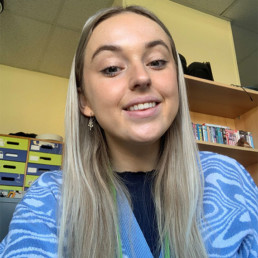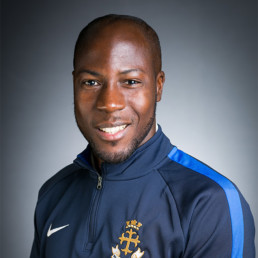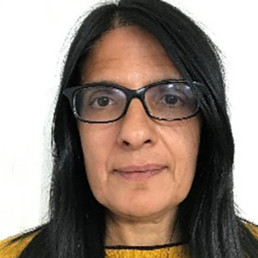Diary of a Dyslexic Teacher

Written by Liz Boyer
Liz Boyer has dedicated 21 years to education, she specialises in EYFS and KS1. Liz has taught across phases in both the Independent and State sectors, most recently in inner-city schools that are wonderfully diverse in nature. Liz has held various school leadership roles and has devotedly mentored ITT/E students for 15 years. In 2021, she became a SCITT Tutor, and currently serves as Primary Lead for Bluecoat SCITT Alliance BSA. Starting in September 2024, Liz will begin her role as a Senior Lecturer at the University of Derby UoD, continuing her commitment to fostering excellence in education and developing the next generation of teachers. Liz is also dyslexic but doesn’t wish that to define her.
In 2021, I wrote a diary during a 10-day COVID isolation. Fast forward to today I am a Primary SCITT Lead at Bluecoat SCITT Alliance BSA within the Archway Learning Trust ALT. Here, I have the honour of collaborating with an array of exceptional trainee teachers, each with their own unique experiences. Some of these trainees have encountered the challenges associated with neurodiversity, and it is a privilege to support them as we navigate the dynamic landscape of teaching together. I firmly believe that every individual has valuable contributions to make, and I am committed to working with both trainees and educational institutions to ensure that everyone’s strengths are recognised and celebrated. Some schools actively champion colleagues of all backgrounds, while others are striving to achieve this inclusive environment. My primary support in this endeavour is Diverse Educators DE, an organisation that not only shapes policy but also guides schools as we navigate the era of inclusivity.
2021 Highlights
Day 1: Introduction
I am Liz Boyer, an educator with 18 years’ experience, whilst I have had many senior school roles I identify first and foremost as a teacher. What sets me apart from some others (although 20% of the population are with me) is my dyslexia, a facet of my professional life I typically do not emphasise however, I am not saying it should be hidden. Today, I aim to share insights, coping strategies, and reassurance for teachers—whether dyslexic or not—drawing from my own journey.
Day 2: Lists
Make a plan with tiny steps to kick start tasks, applicable beyond teaching. For instance, when tackling a long-term plan, start by just gathering necessary materials. Set a specific day and time for each step, adhering to it diligently. Embrace list-making to maintain momentum—I find ticking tasks off deeply rewarding.
- Write day 2 diary entry for blog.
Day 3: Mathematics
Reflecting on my own education in maths, I faced significant anxiety around numbers, which mastery, a concept absent in my schooling, would have alleviated. My breakthrough came shortly before my PGCE during a refresher course, highlighting missed fundamental concepts. Witnessing mastery in Early Years, I see its power in building confidence and comprehension, ensuring all students succeed.
Day 4: Level 7
For reluctant readers and writers aiming for academic credibility at Level 7, the demands on trainees, ECTs, and their mentors are undeniably higher than before. While high expectations for teachers are justified, they should come with increased trust and respect for the sector. Amidst such pressure, retaining and nurturing good teachers becomes crucial. Here are practical pointers for those feeling overwhelmed:
- Start with subjects that genuinely interest you, for me EYFS or ITT/E.
- Cultivate a network of trusted friends and colleagues who can help read and rephrase materials.
- Utilise social media groups for resources and support.
- Incorporate audiobooks or podcasts into your routine for multitasking.
- Engage in webinars or teaching hubs for ongoing, affordable support.
Day 5: Phonics
Balancing play, phonics, and literacy is challenging but crucial. Reflecting on my education and my son’s journey, I recognise the importance of time in learning to read and write. While the new EYFS framework is positive, there is still a lack of trust in children’s need for exploration and play. More emphasis on Phase 1 and language development in Reception is essential.
Day 6: Asking for Help
Accepting support is vital, even though I found it challenging in the past. My mum checked my work as a teenager, and although I found it embarrassing then, I now appreciate support from her or other trusted checkers.
Day 7: Making Mistakes
Mistakes are part of learning, but professionalism demands accuracy in communication. You also need to set a good example to children and I think that written and spoken English needs to be correct. Daily practice and support are essential for improvement, use flashcards and revision techniques just as you would with children. Senior Leaders need to play to people’s strengths and celebrate the creativity, ability to communicate and energy to name a few positive attributes that often come from pupils and teachers with dyslexia.
Day 8: Health and Resilience
Resilience is vital for teachers. Learning from setbacks and taking care of mental and physical health are crucial. After setbacks like nerves in interviews, it is important to learn and grow.
Day 9: Supply Teaching
Supply teaching offers valuable learning opportunities and keeps educators sharp. It allows observation of various school cultures and improves subject knowledge through diverse experiences.
Day 10: Conclusion
I hope you have found my experiences useful and that I have emphasised that having dyslexia or other learning needs need not be a barrier to teaching. Full blog available on request.
LGBTQ+ teachers don’t receive the training and support they need

Written by Dr Adam Brett
Adam has completed a doctorate exploring the experiences of LGBT+ secondary teachers. A presentation of his findings can be found here. He also co-hosts a podcast called Pride and Progress, @PrideProgress, which amplifies the voices of LGBT+ educators, activists and allies.
Originally posted on The Conversation in May 2024:
https://theconversation.com/lgbtq-teachers-dont-receive-the-training-and-support-they-need-228162
Republished with permission of the author.
LGBTQ+ teachers report feeling stressed and even discriminated against in the workplace due to their identity. This is a problem when keeping teachers in their jobs is vital. Teaching is facing a crisis in both recruitment and retention: in 2021-22, more than 39,000 teachers quit the profession.
But there is no formal support or training offered to LGBTQ+ teachers by the Department for Education. Supporting the teaching workforce who identify as LGBTQ+ and making teaching a welcoming profession should be a priority for the government.
For LGBTQ+ teachers, working in UK schools may no longer be the deeply traumatic and dangerous experience it was under Section 28 of the 1988 Local Government Act, which was repealed in 2003. This law sought to ban local authorities and their schools from promoting the acceptability of homosexuality as a “pretended family relationship”.
But LGBTQ+ teaching staff continue to face challenges such as feeling unsafe in their workplace.
Throughout their careers, LGBTQ+ teachers are placed in the difficult position of deciding whether they should conceal or reveal their sexual or gender identity. This is not a decision they are trained to deal with, nor a decision they make just once. It is particularly tricky in schools where teachers must decide if, when, and how to be open with different groups – staff, students, parents, and others involved in school life.
As an LGBTQ+ former teacher, I know first-hand the emotional tax that comes with continuously negotiating LGBT+ visibility and identity within school.
Unsafe spaces
For my doctoral research I worked with 12 LGBTQ+ teachers from a variety of contexts, including faith, private, and single sex schools. The teachers took photos to represent the spaces where they felt most and least safe within their school, and described the significance of their photos.
The teachers changed how they behaved out of fear of being seen as LGBTQ+. They did this in particular in open or visible spaces, such as when on break duty, leading an assembly or in the staffroom.
In these spaces, the LGBTQ+ teachers were fearful of comments or incidents related to their identity that they felt unequipped to deal with. One teacher said:
I give my assemblies quite often, and I don’t hide my sexuality from anybody, so the student body knows that I’m gay … but when I’m doing my assemblies I feel, I feel scared and I don’t know if it’s because I know that they know that I’m gay and therefore, I’m like afraid of them … I don’t know hurling a slur or something.
By contrast, the teachers often described their classrooms as the spaces where they felt most safe. Here, they had created their own routines, relationships and systems.
Among the 12 participants, there were teachers who had been told not to discuss their sexual or gender identity. One teacher told me that they and others had been asked to sign a non-disclosure agreement in a Catholic school: “We weren’t allowed to talk about the fact [that we were gay],” they said.
These are extreme examples. Generally, though, the assumption of heterosexuality in schools can lead to personal questions and situations that LGBTQ+ teachers often feel unequipped to deal with.
Cisgender and heterosexual teachers might be asked about their partners and families and would feel no fear of retribution or backlash in answering those questions. But what might be an entirely unremarkable conversation for a heterosexual teacher might well be deeply fraught for an LGBTQ+ teacher. This can be understood as “heterosexual privilege”.
Despite thousands of the teacher workforce identifying as LGB+, they receive no formal support or training for the challenges that they are likely to experience in their career. Sending LGBTQ+ teachers into schools without adequate support or training will probably lead to these teachers experiencing discrimination and stress.
Some teacher training providers ensure that trainees from minority backgrounds receive training and support to help them face the additional barriers they may experience in schools. However, implementation remains inconsistent.
Future reforms to the Initial Teacher Training and Early Career Framework, which outlines the minimum entitlement for trainee and early career teachers, must reflect these challenges to ensure a minimum and equitable level of provision for LGBTQ+ teachers. If they don’t, fewer LGBTQ+ teachers will enter or remain in the profession. Students and families won’t see themselves represented, and young people won’t be equipped for life in a diverse society.
LGBTQ+ people have the potential to make exceptional teachers and leaders. With the right support, they can thrive in the profession and provide young people with the role models that they desperately need.
My Experience as an Neurodivergent Student Teacher

Written by Catrina Lowri
Catrina Lowri is the founder of Neuroteachers and a neurodivergent teacher, trainer, and coach. As well as having 22 years’ experience of working in education, she also speaks as a dyslexic and bipolar woman, who had her own unique journey through the education system.
I hid my Neurodiversity in my professional life for many years, and here is why.
Student days
When I first started teaching, back in the 90’s, I had never met another neurodivergent teacher. I declared my dyslexia on my PGCE. The course tutor had no idea what to do with the information and told me, if I wanted to learn about Special Educational Needs and Disabilities (SEND), I needed to take extra courses. Our only training on SEND was half a day of project work where we produced materials to support different ‘needs’, then shared them amongst ourselves.
As I thought this was inadequate, I offered to give a half hour talk about my dyslexia.
Attendance was voluntary.
Only half the cohort turned up.
Afterwards, another student commented that “Dyslexia is a class issue. If you are working class, you are thick’ and then he pointed at me “But if you are middle class you’re ‘dyslexic’”. He made air quotes and rolled his eyes. Not the reception I’d been hoping for. After that, I stayed quiet about my dyslexia.
My first Manic Episode
I had a serious car crash at the start of my third teaching practice. My car flipped and rolled onto its side. My passenger, and I had to escape through the sunroof. Luckily, I was driving a second-hand Volvo. Both of us escaped without a scratch.
No harm done. Or so I thought.
I stood on the pavement, watching emergency services deal with the debris and seeing to the driver, whose car hit me, (and escaped with only cuts and bruises). I had an overwhelming feeling that I must be special to survive such a terrible accident.
I remember telling the paramedic that I was fine and
“Didn’t even skag my tights!’, and then giggling hysterically.
I started to stay up late, writing down my brilliant ideas. I wasn’t sleeping and was hallucinating. Although I was still going into my placement school, my lessons went on tangents, and I swung between excitement and irritation. I was sent home until I’d seen a doctor, but they put me on the wrong medication.
As a quick caveat, I am not anti-medication. Medicine can save lives, but I was given SSRI’s (selective, serotonin, reuptake inhibitors) without a full assessment. My doctor didn’t know that I was bipolar. I had no diagnosis. SSRIs can trigger manic episodes in some people, and that is what happened to me.
Surviving the accident ‘proved’ to my manic brain, I was impervious to metal. I stopped looking when I crossed the road and started taking other risks. One day, I nearly got hit by a car. Fortunately, my erratic behaviour was witnessed by a medical receptionist on her way back to work. She persuaded me to speak to a doctor, who assessed my need as acute and found me a bed in a secure ward.
I was in hospital for 2 weeks, then a day patient for a further 6.
I had to re-sit my final teaching practice.
Resitting
I started masking whilst re-sitting teaching practice (TP) at a lovely inner city secondary school in the North of England. I did much better because I was no longer manic. I also moved to a tiny house on the edge of the moors, and lived alone, far from distractions. This had two advantages; I couldn’t afford to go out, and I had no one to go out with, so I worked and slept.
Occasionally my ND got exposed; I’d make spelling mistakes, or misunderstood what my mentor wanted because of my auditory processing difference. Generally, no one noticed. I kept my bipolar at bay by going to bed early, then getting into school at the same time as the caretaker, so I could have some headspace. Then my tutor came in to observe me.
“You seem so different to the last time I observed you – what happened?”
I had lied to him. I told him the reason I went to hospital was due to physical injury caused by the crash and that I missed some of my TP because I was ‘a bit anxious’.
I didn’t tell him about the suicidal ideation or being impervious to metal. I felt like if I said this, he would say I shouldn’t work with children. I love my work, so I stayed quiet
I passed the course.
I’m not proud of lying, but I did what so many ND people do to get through life. We mask. Because we will have to, until the world changes to accommodate us.
Diversity, Equity and Inclusion: Our Journey So Far

Written by Ruth Argyle
Ruth has been a teacher for 16 years and in her most recent role in ITT at KNSTE she is responsible for leading their Diversity, Equity and Inclusion focus.
Keele and North Staffordshire Education (KNSTE) began a journey of reflection, education and improvement in relation to DEI around 12 months ago. Back in the day we were all a little unsure of online working and when cameras were glitchy, backgrounds were chaotic and we all left ourselves on mute regularly. I then had the absolute pleasure of seeing Hannah Wilson of Diverse Educators speak at a NASBTT online conference. I was immediately and irreversibly inspired by her words. As an organisation we had taken our eye off the important issues that Hannah spoke about and it was time to refocus.
The timing couldn’t have been better. We rewrite our KPIs around March and this gave our work the impetus it needed to have real impact. We thought long and hard, consulting with many of our stakeholders about how best to concentrate our efforts in this area and we decided on three drivers for change:
- Marketing and Recruitment
- Our Curriculum
- Associate Teacher (AT) Experience.
We have been ambitious with our plan and have decided on working towards sustainable, internal change that will have impact for years to come whilst being mindful of resisting quick fixes that may ‘plug a gap’ but do not have long term impact. We didn’t want to buy in someone to deliver a one-off session for us, we invested in our staff and this involved a lot of CPD and big learning moments together. It may seem simple but even just deciding together on what order the letters in the acronym would go was significant. In the early days of this project we would use all manner of combinations of the letters: EDI, DEI, IDE… and would hear it said differently at different events and training we went to. Also, sometimes the E stood for Equity and sometimes it stood for Equality, sometimes people meant the D to mean Diversity, other times people were actually talking about Disability. We needed a shared language to ensure we had a shared understanding on what we were trying to achieve.
We worked as a team to collectively improve our understanding of the terms and what we could be doing as an initial teacher training and education (ITTE) provider. We have many responsibilities; responsibility to the trainees we train each year, a responsibility to the partnership schools and the employing leaders in those schools, a responsibility to the children in those classrooms and indeed a responsibility to the profession as a whole. It was and continues to be scary at times but to quote Hannah “we needed to get comfortable feeling uncomfortable” and work through it as a team. As public professionals we feel the weighty responsibility of creating a culture of belonging in our profession. We are mindful of the Equalities Act 2010 and the 9 Protected Characteristics and will work tirelessly to ensure that there is a place for everyone in our profession.
In the last 12 months we have made many positive changes. We have set up affinity groups for our alumni, training our Teacher Educators about DEI and our expectations of them when hosting a trainee, being more aware of our marketing and recruitment processes to consider elements such as neurodiversity and inclusivity and these are all having an impact within our organisation. Despite this good work we are advocates of the notion that we are lifelong learners. We know without doubt that there is more learning to be achieved, more work to be done and more improvements to make so that everyone who comes into contact with our organisation feels that sense of belonging which we are striving for. As we enter Year 2 of our 3-year action plan we are hopeful for continued impact and improvements and will continually self-reflect and be outward looking to achieve this.
What it means to be a diverse educator

Written by Chloe Roberts
Chloe is an English trainee from Hampshire. She is currently completing her training with BASCITT.
Teaching for diversity refers to acknowledging and celebrating a range of differences in and out of the classroom. Being an inclusive practitioner who embraces difference allows transformations in the way we think, teach, learn and act. This is vital in ensuring all students feel celebrated in their learning environment. Although we have come a long way in recognising and celebrating diversity, we still have a long way to go. It is not a case of acknowledging that you are already ‘inclusive’, it is about educating yourself on key aspects of your students’ lives and the dynamics of society. This is something that I will continue in my practice as I embark on my journey to becoming an English teacher. I am quite fortunate that in my subject I can use a variety of resources within the classroom that celebrate a vast amount of different people and cultures, however, this is more limited in KS4 due to the GCSE specifications. Understandably there are more limits in other subjects but having more of an awareness of what you could do is vital. So going forward, what can you do to increase your own knowledge and understanding on diversity?
DiverseEd:
This site is a hub of resources and knowledge on diversity and inclusion. Hannah Wilson has created a space where a variety of practitioners can come together and share thoughts and research. In addition, events and seminars are organised regularly to support teachers and equip them with a breadth of knowledge.
I attended an online conference with Diverse Ed and the range of topics discussed were extremely informative. Hearing from a diverse number of practitioners gave me lots to think about in terms of my own practice. Inspiring teachers to be activists and encouraging a diverse number of people into the profession is a way to make waves in the education community. Jo Brassington, who discussed their own experience in the classroom as a non-binary teacher, claims that ‘to make change we need to be seen in the room’. I absolutely agree with this, as a member of the LGBTQ+ community I have always struggled with being open about my identity with others. Discussions like these have encouraged me to ‘be seen in the room’ and embrace my own differences, which some of my students can relate to. I am no way implying you must ‘come out’ to students if you do not feel comfortable, but having some transparency about your own lived experience can create a safe space for others to.
The whole morning was incredibly thought provoking and gave me a lot to think about in my own practice. Fortunately, there are recordings of the conference on Diverse Ed alongside lots of blog posts which can inform your teaching. (see below in further resources for website).
Seminars:
Over the past year I have attended a variety of seminars relating to diversity in education. All of which I have found on Eventbrite. I find this website incredibly useful for a range of different forms of CPD. It is accessible and the majority of seminars are free to access. This is another way to increase your knowledge on a variety of different topics, including diversity within education.
A recent seminar I attended was on ‘Recovering Black Storytelling in Qualitative Research’. This covered how we can encourage our students to use their narrative voice alongside a discussion on Stephanie Toliver’s new book, which is being released. She discussed the literary devices she used in her novel and the origins behind them, which was really interesting. The thought process behind a writer’s writing is always incredibly fascinating! This was a celebration of black culture along with discussions that can translate into the classroom. Although curriculums are becoming more diverse, I have found there is still a lack of celebration when it comes to people of colour; the negative connotations that are presented in literature through the texts we have historically studied are not changing. Why are we continuing to study outdated ideologies? I am not discrediting the fact that it is important to have an understanding of such things, but to prioritise information presented by white cisgendered men, does limit our understanding and knowledge of other cultures.
Overall, seminars are brilliant and can really inform your practice. Eventbrite has such a range from something subject specific or general CPD for teachers. I recommended having a look around the site and searching for seminars that spark your interest.
What can you do in school?
I think a good place to start is speaking to colleagues and gauge an understanding of what your school already does. In my previous school, I knew that there used to be an LGBTQ+ and ally group during lunch times. I then decided to reinvent the club and bring it back. I wanted to create a space where anyone could come and discuss their experiences and learn about the LGBTQ+ community. I was really pleased with the turnout and the maturity all students displayed when discussing their experiences. It was great to hear their ideas and what the school could do to ensure they were being more inclusive.
Speak to your departments and see what you can bring into the curriculum. Again, as an English teacher I am fortunate to be able to bring in a range of different texts that students can learn from; however, tutor time is an excellent way to go into more detail and have discussions with students regarding diversity and what it means to them. Obviously PSHE is an excellent way to integrate these topics but get to know what your students are learning in PSHE and relate that into lessons. In addition, during LGBTQ+ History month and Black History month, there are a range of one off lessons that you can use in school which celebrate and educate those on diversity. Please don’t limit yourself to using these resources during their celebratory months, there are so many amazing things we can learn from a variety of lived experiences.
Here below are a range of resources that I have found really useful in my learning journey:
Books:
- How to transform your school into an LGBT+ friendly place by Anna Carlile and Elly Barnes
- Celebrating difference: A whole school approach to LGBT+ inclusion by Shaun Dellenty
- From Ace to Ze: The little book of LGBT terms by Harriet Dyer
- The Emperor Has No Clothes: Teaching about Race and Racism to People Who Don’t Want to Know By Tema Jon Okun
- So You Want to Talk about Race By Ijeoma Oluo
- White Fragility By Robin D’Angelou
- Why I’m No Longer Talking to White People about Race By Renni Eddo-Lodge
- Memoirs of a Black Englishman By Paul Stephenson
- White Privilege By Kalwant Bhopal
- Not Light but Fire: How to Lead Meaningful Race Conversations in the Classroom by Matthew R. Kay
- Facilitating Conversations about Race in the Classroom by Danielle Stewart, Martha Caldwwell, and Dietra Hawkins (comes out in March)
- Knowing How To Discuss Race In The Classroom: A Guide For White Teachers On How To Develop and Understand Racial Literacy by Ashlee A. Jeannot
- A Little Guide for Teachers: Diversity in Schools by Bennie Kara
Websites:
- Stonewall: LGBTQ-inclusive education: everything you need to know (stonewall.org.uk)
- Youth.gov: Schools | Youth.gov
- Breakout Youth Basingstoke: About Breakout Youth: LGBTQ+ Hampshire-based Charity
- Diverse Ed: https://www.diverseeducators.co.uk/
- Black Men Teach: https://blackmenteachtc.org/
- Preparing for Cultural Diversity: Resources for Teachers: https://www.edutopia.org/blog/preparing-cultural-diversity-resources-teachers
- Resources for Educators: https://equaliteach.co.uk/education/classroom-resources/
People to follow on Twitter:
Here are some of the things I have thought about when increasing my knowledge on diversity. It is a journey and it is important to ask yourself difficult questions and reflect on what you can do within the classroom. As teachers we can all be activists and create an environment where all of our students feel heard and validated.
#DiverseEd’s Top 10 Blogs of 2020-21

Written by DiverseEd
Diverse Educators started as a grassroots network in 2018 to create a space for a coherent and cohesive conversation about DEI. We have evolved into a training provider and event organiser for all things DEI.
We love to amplify the voices, share the journeys, and celebrate the stories of our community. Our blogs vary from sharing lived experience, to reflecting on classroom practice and curriculum design, to evaluating the impact of policy changes. We published 150 blogs from our network last academic year. You can meet our bloggers here and you can review our collection here.
Deepening our thinking around DEI starts with who and what we are reading, helping us to develop our confidence and our competence, both individually and collectively. Reading the blogs by our community provokes reflection and stimulates conversations to help us all understand the breadth and the depth of issues we need to develop an awareness of.
Themes explored in the 2020-21 blog collection include: allyship, belonging, careers, coaching, commitment, community, curriculum, culture, governance, HR, identity, ITTE, language, leadership, policy, recruitment, reflection, representation, research, safeguarding, strategy, teaching, wellbeing.
Here are our Top 10 Most-Read #DiverseEd Blogs in the 2020-21 academic year:
- How do we deal with racism in the classroom – Hannah Wilson
- How to promote an anti-racist culture in social work – Wayne Reid
- Interactive diversity calendar 2021 – Carly Hind/ Dual Frequency
- How does material deprivation intersect with ethnicity to understand the variations in the achievement among BAME students – Nicole Edwards
- Don’t tuck in your labels – Bennie Kara
- Dear Secretary of State – Hannah Wilson
- Gender is wibbly wobbly and timey wimey and gloriously so – Matthew Savage
- Engaging with diversity – giving pupils a voice – Gaurav Dubay
- Black lives matter, then now always – Wayne Reid
- Breaking the cycle anti-racist plan term 1 – Dwain Brandy
Thank you to everyone who has contributed to our #DiverseEd date and please do get in touch if you would like us to publish you. You can find out more about how to submit here.
An Anti-Racist Approach to Physical Education

Written by Mo Jafar
I am currently Head of PE at an all boys school in East London. I have been appointed Subject Lead for PE at the Havering Teacher Training Partnership.
It can be difficult to recognise how your practice can have a detrimental effect on Black people if you are unaware of the issues Black people face. It could be argued that a lack of Black people in middle leader positions in Physical Education can have a profound effect on the experience young Black people have in PE and this lack of representation is one reason why organisations such as BAME PE are so important.
There are the classic stereotypes with regards to athleticism and power that are associated with Black people in sport and physical activity but what if you do not fit this model? If you are a Black girl in PE and not athletic what does PE offer you? Conversely, if you are athletic and Black how does this narrow your opportunities or change the way you are treated in PE?
These are important questions and unfortunately may never be addressed if we don’t bring them to the table. As stated by Clark (2020) “People in power are pragmatic when working on behalf of those that don’t have it”. Clark’s comments are from a paper he wrote last year based on applying a critical race theory pedagogy towards Physical Education.
Below I have highlighted some examples of how we might break through this pragmatism and actively adopt an anti-racist approach to Physical Education. I discussed this back in April on the PEPRN podcast by Dr Ash Casey which can be found here.
#1 The Changing Room
If you understand the black body you will know that moisturising is a religious art. How does this relate to PE I hear you say?
The changing room is rife for ridicule and if someone has forgotten to moisturise their legs then they are now a target for verbal abuse from peers.
If I noticed this happening over a number of weeks I would raise this with my designated safeguard lead as to me it’s not as simple as they have just forgotten. It might be the start of a thread that unravels later down the line.
As a Black person this type of issue is in my immediate attention but I’m not sure that it would be for others. Furthermore, the people in charge of designing and delivering safeguarding training are predominantly white and may not have this knowledge.
Including insights such as this in safeguarding training would not solve all the problems of racism but it may well be a start.
#2 Swimming and golf: limited opportunities
According to Swim England, the sport’s governing body, 95% of black adults and 80% of black children in England do not swim, and only 2% of regular swimmers are black. See Guardian article here and also the short documentary film by Ed Accura “Black’s Can’t Swim” on YouTube.
Having an acute awareness of the impact race has on an activity like swimming could encourage PE subject leads to be creative and ensure swimming for black pupils is a necessity and not a luxury. These statistics show there is a huge gap that PE can and should attempt to fill.
Another example came from a recent parents evening as one parent made me promise to offer opportunities for black boys in sports like golf.
Not all places feel accessible for black people or are experienced the same way as their white counterparts and for a long time I wouldn’t have felt it was my place to explore golf as a black man let alone a young black boy from East London.
We can change this by committing to offering young black people the opportunity to explore environments like golf and break down the idea that it is not their place to be.
Storytelling…As a tool for change
As PE teachers, the challenge now is to ensure that young black people (and all young people really) have the opportunity to experience a range of activities that historically and for a variety of reasons may never cross their radar.
It’s about knowing the people in front of you. Trying to understand all of their complexities as individuals, whilst appreciating their socio-cultural constraints and the role racism can play on a day to day basis.
Lastly, listening to the stories of Black people without judgement and acknowledging that you may not fully appreciate the world they experience could go a long way to enriching the PE experience. For a more in depth reading on this topic and other PE related posts please visit my blog site teaching2move.wordpress.com
References
Langston Clark (2020) Toward a critical race pedagogy of physical education, Physical Education and Sport Pedagogy, 25:4, 439-450, DOI: 10.1080/17408989.2020.1720633
My Journey as an Ally

Written by Ben Hobbis
Teacher, Middle Leader and DSL. Founder of EdConnect and StepUpEd Networks.
I have been on a real journey as an ally. I have been on a journey as a champion for diversity, equity and inclusion. I’m not sure where this passion comes from. I am a heterosexual, white, able bodied man. I know I’ve had it easy compared to my colleagues from different backgrounds within the protected characteristics. I’m not sure where my drive or passion for this comes from. I think it comes out of my moral compass of wanting to help create a more equal and equitable society. I know I can’t change the world, but I know if I don’t play a part I won’t be standing by and living my values.
When I first came into education, I thought inclusion meant ensuring special needs were catered for, that we pushed our gifted and talented children and that we ensured our looked after children and those with medical conditions were cared for. I was naive to think that this was inclusion.
However, I am very fortunate to attend (and soon graduate) from a university, an initial teacher education provider that strongly embodies, embeds and sequences the themes of diversity, equity and inclusion throughout the three years of my Bachelor of Arts in Primary Education. Just to give you some context this is how it was broken down for me:
- First Year – an overview of child development, barriers to learning including SEND, more able, economic deprivation, and English as an additional language.
- Second Year – a whole module dedicated to special educational needs, disabilities, and inclusion; opportunity to complete a placement in a special school.
- Third Year – current issues in education module including sessions on Race, LGBT, Gender, mental health and wellbeing; opportunity to research any area of inclusion and diversity in our educational research module; CPD sessions supporting these topics; in our core module gender issues in STEM is explored.
- All Years – the opportunity to arrange our own placements in special schools, children’s hospitals, and other settings. Opportunity to explore diversity, equity and inclusion on placements.
I’ve spoken to others on similar courses who get the equivalent of a week (if that) to these topics. In some cases, a day. And in some cases, some of these topics are not addressed. As a result, we are doing a disservice to our trainee teachers, our early career teachers, our communities and ultimately our children.
In our current issues module, we produced a training resource on two areas of the module. I chose LGBT and Race. I consider myself to be an ally. To be attuned to the issues (particularly over the last year) that have affected the world. However, I considered, how would I discuss this in the classroom? How would I handle this? And the answer was I didn’t know. Therefore, I felt it my duty to focus my assignment on this. Whilst now having completed the assignment, I am by no means the expert and by no means this being the last piece of CPD I do on the subject; I am pleased to have been supported and encouraged to educate myself further by an institution valuing DEI.
As an ally, I will never fully understand, but I can try to and do everything I can to support others. I have a duty for the children and communities I serve to do so.
It is about time Initial Teacher Training and Education embraced diversity and inclusion

Written by Davinder Dosanjh
Executive Director Leicestershire Secondary SCITT
Thirty-five years in education as a teacher, senior leader, Her Majesty’s Inspector, senior lecturer, teacher educator, I had hoped we would have moved much further forward when we talk about Diversity, Equity and inclusion. I am still not seeing Initial Teacher Training and Education embracing the diverse voices and representing BAME. The decision makers and those on the working groups advising the Department for Education, are the same white faces, from the same organisations.
Policies and initiatives such as the Core Content Framework, Early Careers Framework, have missed opportunities to embed diversity. We are still wedded to the Teachers’ Standards. Teacher Standard 3 and Part 2 of the Teachers’ Standards make no strong statements about embedding diversity, equity and inclusion. The Core Content Framework and Early Career Framework opportunities have merely amplified the Teachers’ Standards into ‘Learn that..’ and ‘Learn how to..’ statements. Examples of systemic racism. These frameworks are a minimum entitlement, so they imply diversity is not part of that prerogative.
Those that train teachers are predominantly, white and middle class. I have been involved with teacher training at a university and a SCITT. Whilst working with both organisations I have asked and sought to be on national bodies which represent these sectors. Never managed to get through the red tape and procedures which maintain the institutional racism. I am just as qualified, have the experience and the track record. Still working out what I am doing wrong or to flip it the other way, what are these national organisations doing which perpetuate these barriers? You have got to be voted on, seconded and then your mates vote you in because you have had the time to network with them. Time to re-examine the criteria for national bodies, working parties, time to have a transformation, give others a voice.
If you have been on a national working group, advisory once, you are to be commended, then pass the baton onto someone else. Insist these groups are diverse and heard at a strategic level.
We need to undertake a more wide-ranging review at the trainee’s journey from pre-application, application, interview, the programme and actual training experience. We need to ask ourselves some critical questions. Then follow the sequence of auditing, action planning, accountability and assessing impact. A starting point are some self-assessment questions below:
Pre-application
Is the marketing diverse and showing a range of positive diverse role-models?
Are we appealing to a diverse range of communities, using a range of networks (Asian radio) not just the traditional career fairs, university, school events?
Application
Who interviews?
Are all interviewers trained beyond safer recruitment, such as Diversity training?
Do we interrogate the data? (those made an offer, rejected, reasons why)
Teacher Educator and Placements
Who are the teacher educators?
Are they diverse?
Can we talent spot and seek out diverse teacher educators?
Are we carefully matching the right teacher educator to the trainee?
How do we deal with any issues of discrimination?
Curriculum
What is the golden thread of Diversity, Equity and Inclusion?
Where is it? What is it?
Who is delivering/facilitating?
Are the role models diverse?
Do we share the mic and encourage allyship?
Evaluation and Quality Assurance
Are the trainee’s voices being heard?
What questions are we asking about Diversity, Equity and Inclusion?
Governance
Is the Steering/Partnership Group diverse?
How can we seek out colleagues from our partner schools to be part of the group?
Is Diversity, Equity and Inclusion a regular agenda item?
I would hope we have moved forward and that any teaching training provider, whether school or university could not ignore a trainee being called a ‘paki’ by pupils like I was. Despite me raising objections, I was told to get on with it, despite this being a regular occurrence. We have policies and procedures to formally report such incidents which were not in place when I undertook my training. More importantly, great communities such as Diverse Educators and BAMEed Network.
I am proud to say the Leicestershire Secondary SCITT has increased the diversity of its cohort from 29% in 2015 to 49% in 2020.
How do we deal with racism in the classroom?

Written by Hannah Wilson
Founder of Diverse Educators
So, what do you do, as a teacher, when a student uses a racial slur against you in the online classroom?
This week I had a disclosure in a NQT training session I was hosting from a trainee teacher. The trainee was a woman of colour. She was distressed as she shared an incident from her week at school and asked for advice. She shared that in a lesson with her Year 10s last week, whilst using the platform Kahoot, one of her students referred to her using the N word. She broke down as she finished her story and turned her camera off to gather herself. The zoom room went quiet. Everyone looked deeply uncomfortable. I watched everyone take a breath and pause to see who would speak first.
One of the facilitators, a woman of colour, unmuted herself and said: “I am sorry. I am really sorry that happened to you”. She went on to share her advice on what the NQT could do. Her co-facilitator, a man of colour, added his advice on how he would handle it if it happened to him. Both gave sound advice, but it struck me that it was centred around what the individual, the victim, should do. It is also struck me that both were talking from a position of lived experience.
As a former teacher trainer, I was aggrieved on her behalf that she had experienced this. As a human being, I was outraged that anyone would think that using a word was acceptable. As a teacher, and a former Headteacher, I was disappointed to hear how the school had handled it. As a white person I was embarrassed and felt sick. Having reported it to her mentor, who had rung her that night to check in, she had been told that they (the school) could not identify the student responsible and she had been advised to send an email (herself!) to the class about the incident.
I was horrified at this response from the school. Why are schools asking the victims of racism to deal with it themselves? Moreover, an early career teacher at that? Why were the SLT not dealing with this racial abuse to show the severity of the situation?
I chipped in and advised that she should escalate it to the SLT responsible for behaviour. That if she did not get a satisfactory response, that she should be escalating it to the Headteacher directly and to consider contacting her union. I DMed her my email address and offered to support in her challenging this failure of the school to protect her. The next day I received an email from her professional tutor assuring me that it had been dealt with internally and that the NQT was being supported the next lesson and that the DHT would be calling each student in the class to identify the culprit.
But the incident has been bothering me ever since… How many other people of colour who have entered our profession are navigating how to deal with prejudice themselves? Who else is being failed by their school and by the system? Who else is feeling isolated, vulnerable and unsupported?
I tweeted out the scenario to see what others thought and how common place this is. You can see the thread with a myriad of responses here.
Below is a summary of the different perspectives on the situation of a teacher being racially abused by a student:
- The teacher should be offered support.
- The student should be offered support.
- The incident needs a full investigation.
- The class should all be asked to write a witness statement.
- The student should receive a Fixed Term Exclusion.
- The student should have a Permanent Exclusion.
- The whole class should be sanctioned.
- The incident should be recorded as a racist incident in the school’s racist log.
- The governing body should be informed.
- The incident should be reported to the LA.
- The next lesson should be replaced with an Anti-Racism workshop for the class.
- The class should be issued with an Anti-Racism contract.
- The parent/ carer should be brought in for a meeting.
- The student should write the teacher a letter of apology.
- The student/ teacher should have a restorative conversation before the next lesson.
- The student should be removed from the class.
- The community police officer should be involved.
- The student should receive an intervention prior to returning to the next lesson.
- The student should sign a behaviour contract on re-entry.
- The online teaching/ behaviour expectations should be reinforced to the class.
- The behaviour policy should be reviewed for how it tackles racism.
- The trainee teacher’s mentor should intervene.
- The SLT should attend the next lesson to speak to the class and re-establish boundaries.
- The year group should have an assembly on prejudice and discrimination.
- The next citizenship / PSHE lesson for the year group should deal with racism.
25 possible and probable actions that should take place to ensure that this member of staff feels safe and is supported, moreover, that another member of staff is not subjected to racial abuse in this school.
But other questions were also raised around the context of the incident:
- Where do we draw the line at explicit and deliberate racism in our school?
- How are ITTE providers preparing trainee teachers to deal with prejudice?
- How are schools supporting NQTs with dealing with discrimination?
- Should schools be using platforms where you cannot identify students?
- Should all lessons be recorded so that incidents can be reviewed?
- Should early career teachers be delivering solo lessons?
- If the N word is in an extract should the teacher say it out loud? Is it ever okay to use the N word if it is in a teaching resource? Does it make a difference if the teacher saying it is a person of colour?
- How is the curriculum being reviewed to tackle prejudice?
- How is the culture of the school being reviewed to educate the students about expectations?
- How has the mentor been trained to support a NQT from a diverse background?
- How have the SLT been trained to deal with racism?
- What is the school’s behaviour policy for prejudice?
There were a lot of comments about attacks based on characteristics being on the increase in our schools, and also in our society. In fact, I have seen several posts on LinkedIn and Twitter this weekend from educators sharing that they have been racially abused at work, but also about people of colour being racially abused in the street.
There were several concerns about the anonymity of online platforms meaning that teaching staff are not protected. Moreover, that there is more room for students to push boundaries. We need to remember that diversity, equity and inclusion work is part of our safeguarding responsibility. Every member of our school community needs to feel physically and psychologically safe.
There is clearly a lot of work for us to do across the system, across the curriculum with both children and staff, around addressing discomfort and intolerance. This incident is indicative of a wider, deeper piece of work that needs to be done. We can sanction the incident in the short term, but how do we prevent it from happening again in the long term?
We all need to be angry at this behaviour no matter what our skin colour. We all need to be part of the solution and take collective responsibility for creating change. We all need to challenge the institutions, the policies and the practices that do not protect people. We all need to speak out, stand up and not only state that this is not okay, but also do something about it by holding others to account.
So, the question should have been: what do you do, as a school, when a student uses a racial slur against a teacher in the online classroom?

